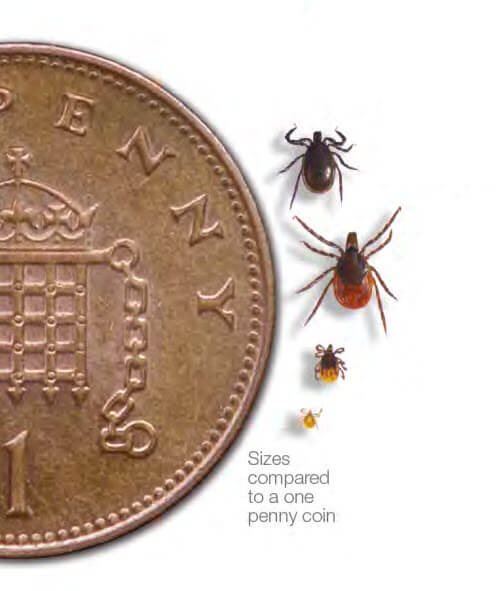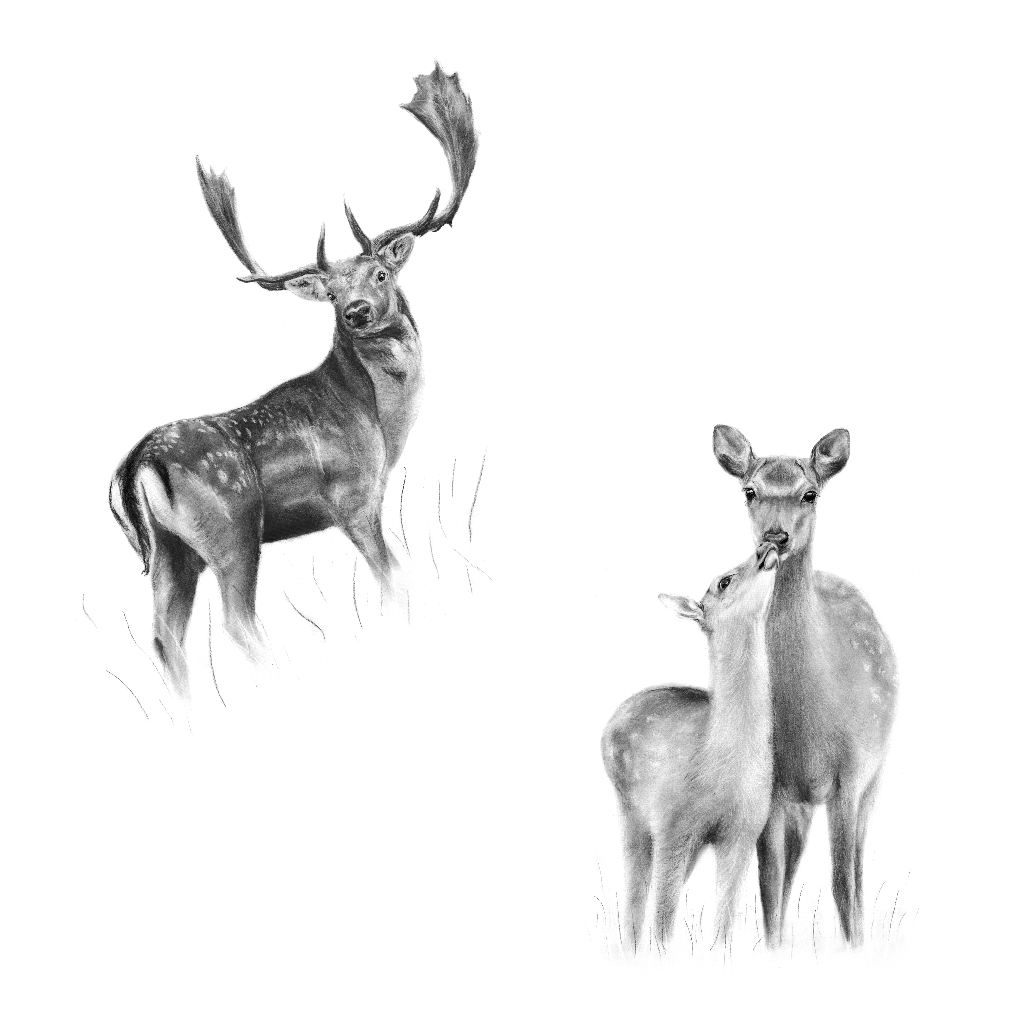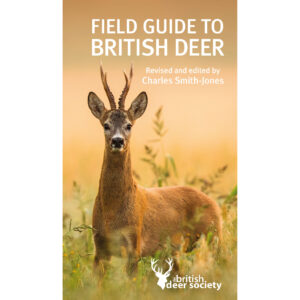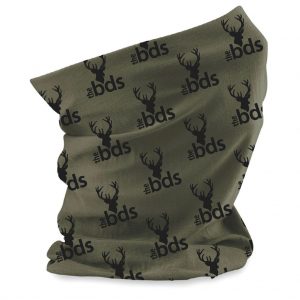WHAT ARE TICKS?
In the UK, the most important tick species to human health is Ixodes ricinus, more commonly known as the sheep, castor bean or deer tick. This species is the principal vector of Lyme Disease.
During this feeding process, ticks can transmit pathogens that can result in infections such as Lyme Disease. This is why it is important to protect yourself from tick bites and to remove ticks quickly and safely.
WATCH OUT TICKS ABOUT!
The life cycle of a tick
The tick life cycle is made up of three active stages; larvae, nymphs, and adults. Each stage needs an animal host on which to feed before it can moult to the next stage, or in the case of the adult females, lay eggs.
The life cycle takes on average three years to complete. When ticks search for a host on which to feed, they climb to the tips of vegetation and use special sensory organs on their front legs to detect stimulants such as carbon dioxide, changes in light and body heat given off by hosts. As a host brushes past the vegetation, ticks climb on.
Once a suitable feeding site has been found on the host, the tick will take one continuous blood meal (lasting for a varying number of days, depending on the life stage of the tick). The tick will then detach and drop off into the vegetation to digest and moult to the next stage. After mating, adult female ticks will lay several thousand eggs at ground level before dying.

Where ticks are found
Ticks are very sensitive to temperature and relative humidity, requiring areas with dense ground layer coverage of vegetation for survival, reproduction or establishment. Areas such as woodlands, grasslands, and moorlands, provide this dense vegetation layer and a suitable range of hosts on which ticks can feed.
Ticks can also be found in some urban parks and gardens. Within these habitats, ticks are often highly abundant in ecotonal habitats i.e. transition zones between different habitats that are often used by wildlife.
Without larger hosts such as deer that adult ticks feed on, tick populations are unable to establish, even when suitable vegetation and temperature and humidity conditions are met. However, ticks can still be brought into the area by other wildlife.
When ticks are active
In England, nymphal tick activity increases during spring, peaking from April to June. During this period, the risk of acquiring a tick bite is highest.
Activity reduces during the summer months, but can then pick up again in early autumn.
Activity continues over the winter months but at a reduced level.
Adult ticks can be active at all times of the year but are more active in summer which is also the peak time for larval activity.
Tick bite prevention
- walk on clearly defined paths to avoid brushing against vegetation where ticks may be present
- wear light coloured clothing so that ticks crawling on clothing can be spotted and brushed off
- use an insect repellent that can repel ticks and prevent them from climbing onto clothing or attaching to the skin (always follow the manufacturer’s guidance)
- wear long trousers and long sleeved tops to reduce the direct exposure of ticks to your skin, making it more difficult for them to find a suitable area to attach
Recognising ticks and performing a tick check
In addition to carrying out the prevention measures outlined above, it is important to carry out a regular tick check after participating in outdoor activities (e.g. walking, running, gardening, camping, picnicking). A tick check is carried out by looking and feeling for ticks that may have attached to the skin.
By performing a tick check, the chance of infection is reduced because feeding ticks are spotted and removed promptly.
Also, don’t forget to also check your pets and protect them from ticks.
Prompt and correct tick removal
Evidence suggests that Lyme disease transmission risk increases the longer a tick is feeding. Prompt and correct tick removal can reduce this risk and the need to prescribe antibiotics. The safest way to remove a tick is to use a tick removal tool or fine-tipped tweezers.
Grasp the tick as close to the skin as possible, and taking care not to squeeze the body, pull upwards slowly and firmly.










